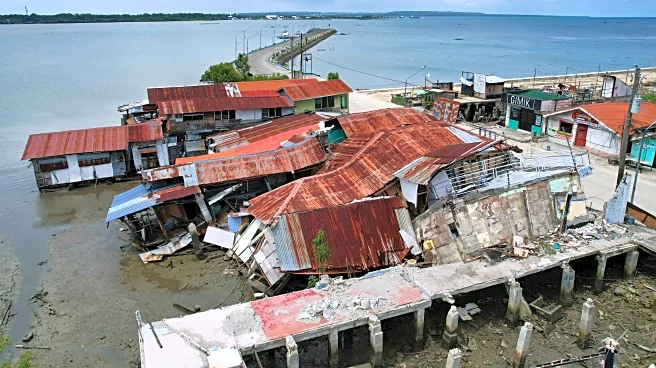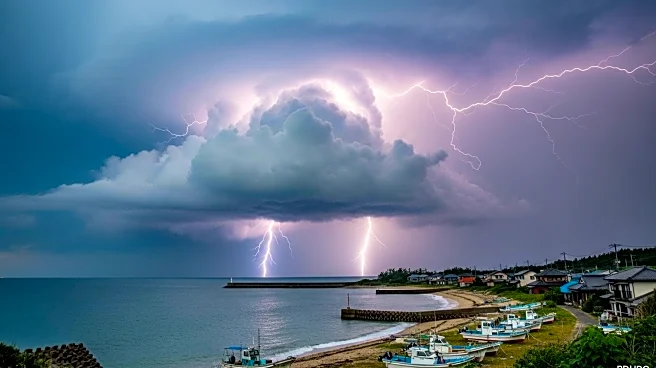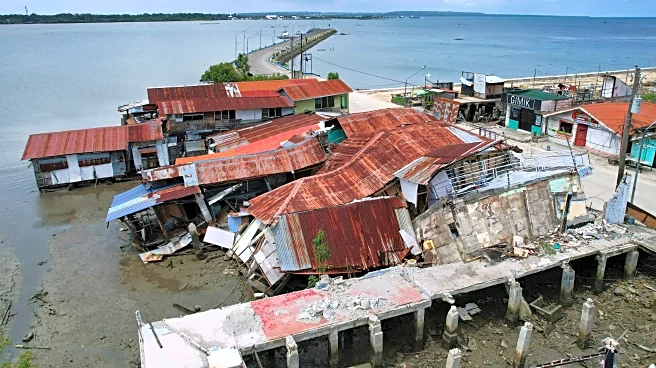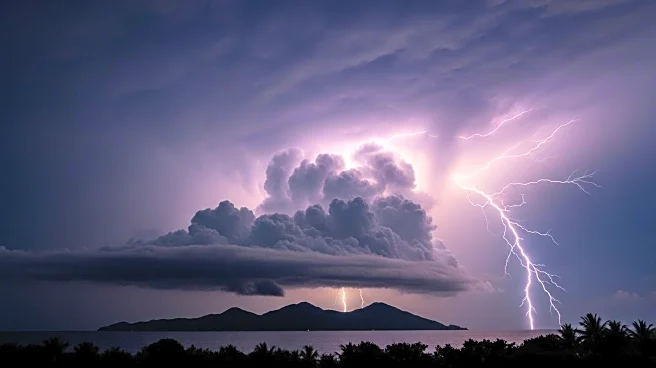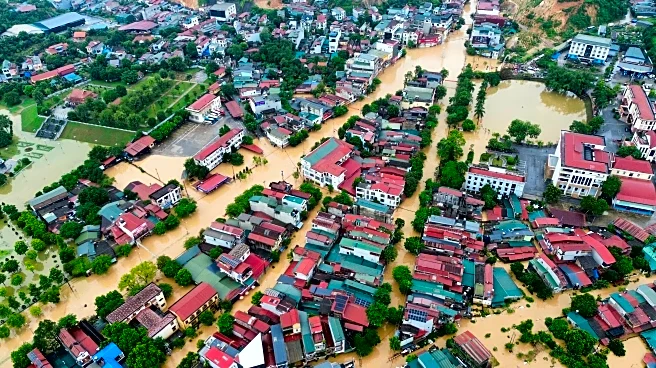What's Happening?
Typhoon Matmo, locally known as Paolo, has intensified as it made landfall in northern Philippines, bringing maximum sustained winds of 130 kilometers per hour. The national weather agency, Pagasa, has issued warnings of heavy rain, severe flooding, and landslides in the provinces of Isabela, Aurora, and Quirino. Government work and schools have been suspended in these areas, and more than a dozen domestic flights have been canceled. After crossing Luzon, Matmo is expected to re-emerge into the South China Sea, where it may intensify further before making a second landfall in southern China.
Why It's Important?
The intensification of Typhoon Matmo poses significant risks to the affected regions, including potential agricultural damage and disruption to daily life. The Philippines, being one of the most storm-prone countries, faces frequent cyclones, which can lead to loss of life and economic setbacks. The typhoon's impact on agriculture, particularly in sugar-producing regions of China, could affect local economies and food supply chains. The ongoing threat of severe weather highlights the need for effective disaster preparedness and response strategies in these vulnerable areas.
What's Next?
As Typhoon Matmo continues its path, authorities in both the Philippines and China are likely to increase their emergency response efforts. The focus will be on mitigating the impact of flooding and landslides, ensuring the safety of residents, and minimizing agricultural damage. Monitoring and forecasting will be crucial in preparing for the typhoon's potential intensification and subsequent landfall in China. The situation may prompt discussions on improving infrastructure and resilience against natural disasters in the region.
Beyond the Headlines
The recurring nature of typhoons in the Philippines and surrounding areas underscores the broader challenges of climate change and its impact on weather patterns. Long-term strategies for climate adaptation and sustainable development are essential to reduce vulnerability and enhance resilience. The event also highlights the importance of international cooperation in disaster management and climate action.




